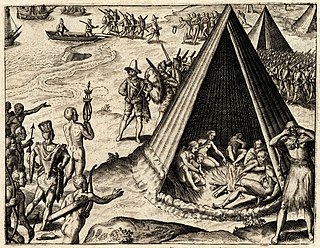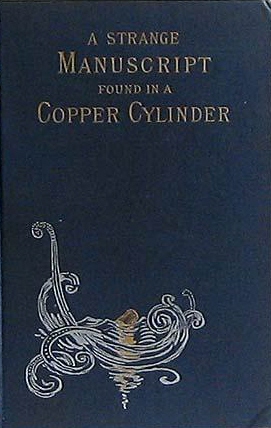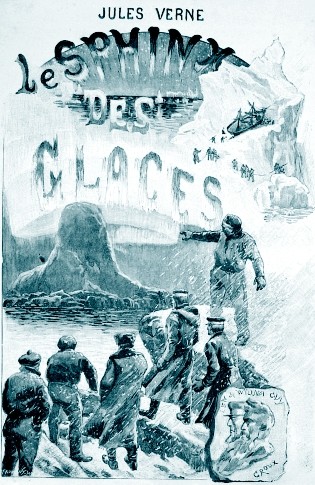
Edgar Allan Poe was an American writer, poet, editor, and literary critic who is best known for his poetry and short stories, particularly his tales of mystery and the macabre. He is widely regarded as a central figure of Romanticism in the United States, and of American literature. He was one of the country's earliest practitioners of the short story, and is considered the inventor of the detective fiction genre, as well as a significant contributor to the emerging genre of science fiction. He is the first well-known American writer to earn a living through writing alone, resulting in a financially difficult life and career.

Sir Francis Drake was an English explorer and privateer best known for his circumnavigation of the world in a single expedition between 1577 and 1580. This was the first English circumnavigation, and third circumnavigation overall. He is also known for participating in the early English slaving voyages of his cousin, Sir John Hawkins, and John Lovell. Having started as a simple seaman, in 1588 he was part of the fight against the Spanish Armada as a vice-admiral.

"The Pit and the Pendulum" is a short story by American writer Edgar Allan Poe and first published in 1842 in the literary annual The Gift: A Christmas and New Year's Present for 1843. The story is about the torments endured by a prisoner of the Spanish Inquisition, though Poe skews historical facts. The narrator of the story describes his experience of being tortured. The story is especially effective at inspiring fear in the reader because of its heavy focus on the senses, such as sound, emphasizing its reality, unlike many of Poe's stories which are aided by the supernatural. The traditional elements established in popular horror tales at the time are followed, but critical reception has been mixed. The tale has been adapted to film several times.

New Albion, also known as Nova Albion, was the name of the continental area north of Mexico claimed by Sir Francis Drake for England when he landed on the North American west coast in 1579. This claim became the justification for English charters across America to the Atlantic coast and soon influenced further national expansion projects on the continent. Drake's landing site has been identified as Drake's Cove, which is part of Point Reyes National Seashore.

The Narrative of Arthur Gordon Pym of Nantucket (1838) is the only complete novel written by American writer Edgar Allan Poe. The work relates the tale of the young Arthur Gordon Pym, who stows away aboard a whaling ship called the Grampus. Various adventures and misadventures befall Pym, including shipwreck, mutiny, and cannibalism, before he is saved by the crew of the Jane Guy. Aboard this vessel, Pym and a sailor named Dirk Peters continue their adventures farther south. Docking on land, they encounter hostile black-skinned natives before escaping back to the ocean. The novel ends abruptly as Pym and Peters continue toward the South Pole.

Le ChevalierC. Auguste Dupin[oɡyst dypɛ̃] is a fictional character created by Edgar Allan Poe. Dupin made his first appearance in Poe's 1841 short story "The Murders in the Rue Morgue", widely considered the first detective fiction story. He reappears in "The Mystery of Marie Rogêt" (1842) and "The Purloined Letter" (1844).
A custom of the sea is a custom that is said to be practiced by the officers and crew of ships and boats in the open sea, as distinguished from maritime law, which is a distinct and coherent body of law that governs maritime questions and offenses.

Charles Romeyn Dake was a 19th-century American homeopathic physician and writer. As an author, his name is sometimes spelled Charles Romyn Dake.

"Ligeia" is an early short story by American writer Edgar Allan Poe, first published in 1838. The story follows an unnamed narrator and his wife Ligeia, a beautiful and intelligent raven-haired woman. She falls ill, composes "The Conqueror Worm", and quotes lines attributed to Joseph Glanvill shortly before dying.

A Strange Manuscript Found in a Copper Cylinder is the most popular book by James De Mille. It was serialized posthumously and anonymously in Harper's Weekly, and published in book form by Harper and Brothers of New York City during 1888. It was serialized subsequently in the United Kingdom and Australia, and published in book form in the United Kingdom and Canada. Later editions were published from the plates of the Harper and Brothers first edition, during the late 19th and early 20th centuries.

"MS. Found in a Bottle" is an 1833 short story by American writer Edgar Allan Poe. The plot follows an unnamed narrator at sea who finds himself in a series of harrowing circumstances. As he nears his own disastrous death while his ship drives ever southward, he writes an "MS.", or manuscript, telling of his adventures which he casts into the sea. Some critics believe the story was meant as a satire of typical sea tales.

"The Imp of the Perverse" is a short story by 19th-century American author and critic Edgar Allan Poe. Beginning as an essay, it discusses the narrator's self-destructive impulses, embodied as the symbolic metaphor of The Imp of the Perverse. The narrator describes this spirit as the agent that tempts a person to do things "merely because we feel we should not."

"The System of Doctor Tarr and Professor Fether" is a dark comedy short story by the American author Edgar Allan Poe. First published in Graham's Magazine in November 1845, the story centers on a naïve and unnamed narrator's visit to a mental asylum in the southern provinces of France.

An Antarctic Mystery is a two-volume novel by Jules Verne. Written in 1897, it is a continuation of Edgar Allan Poe's 1838 novel The Narrative of Arthur Gordon Pym of Nantucket. It follows the adventures of the narrator and his journey from the Kerguelen Islands aboard Halbrane.

"A Tale of the Ragged Mountains" is a short story written by Edgar Allan Poe partially based on his experiences while a student at the University of Virginia. Set near Charlottesville, it is the only one of Poe's stories to take place in Virginia. It was first published in Godey's Lady's Book in April 1844 and was included in Poe's short story collection Tales, published in New York by Wiley and Putnam in 1845. There is a Spanish translation by Julio Cortázar.

Twixt is a 2011 horror film written, produced, and directed by Francis Ford Coppola and starring Val Kilmer, Bruce Dern, Elle Fanning, Ben Chaplin, Alden Ehrenreich, David Paymer and Joanne Whalley. The film premiered on September 4, 2011 at the Toronto International Film Festival and was screened at various film festivals in North America, receiving a limited theatrical release in a handful of international markets. The film's title, Twixt, refers to the two worlds explored in the film, the dream and the waking worlds.

Pym is the third novel by American author Mat Johnson, published on March 1, 2011. A satirical fantasy inspired by The Narrative of Arthur Gordon Pym of Nantucket, Edgar Allan Poe's only novel, the book explores racial politics and identity in America, and Antarctica. The novel was written over a period of nine years and has been well received by critics, who have praised its lighthearted and humorous style of social criticism.

Francis Drake's circumnavigation, also known as Drake's Raiding Expedition, was an important historical maritime event that took place between 15 December 1577 and 26 September 1580. The expedition was authorised by Queen Elizabeth I and consisted of five ships led by Francis Drake. Termed a 'voyage of discovery', it was in effect an ambitious covert raiding voyage and the start of England's challenge to the global domination of Spain and Portugal.
The World Encompassed by Sir Francis Drake is the earliest detailed account of Francis Drake's circumnavigation. It was compiled by Drake's nephew, also named Francis Drake, based on his uncle's journal, the notes of Francis Fletcher, and other sources. It was first published in London in 1628 by Nicholas Bourne.

















